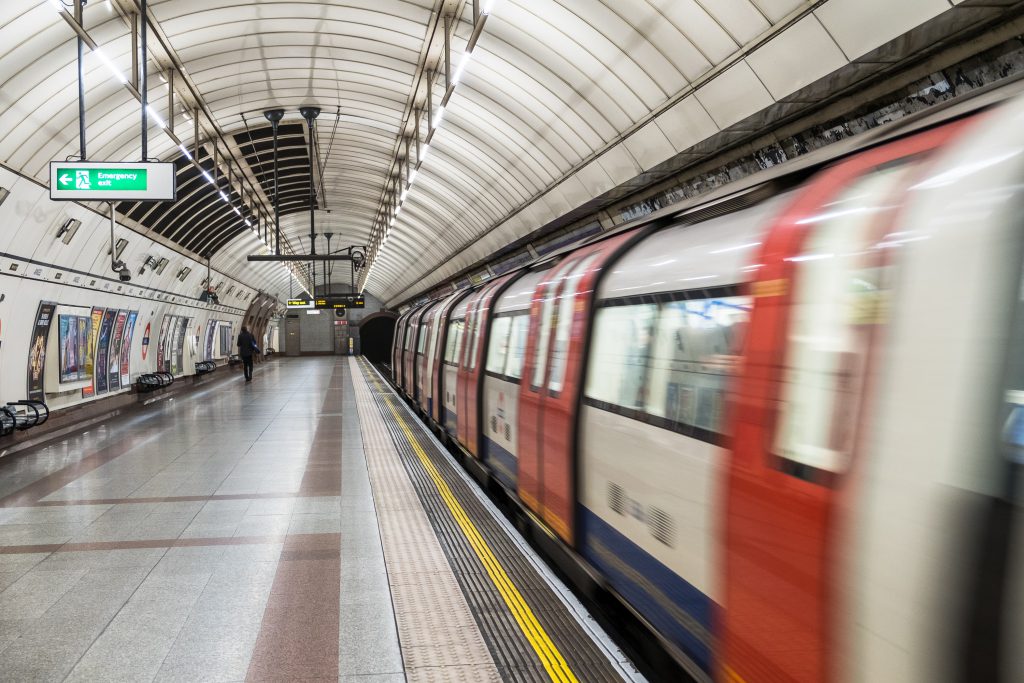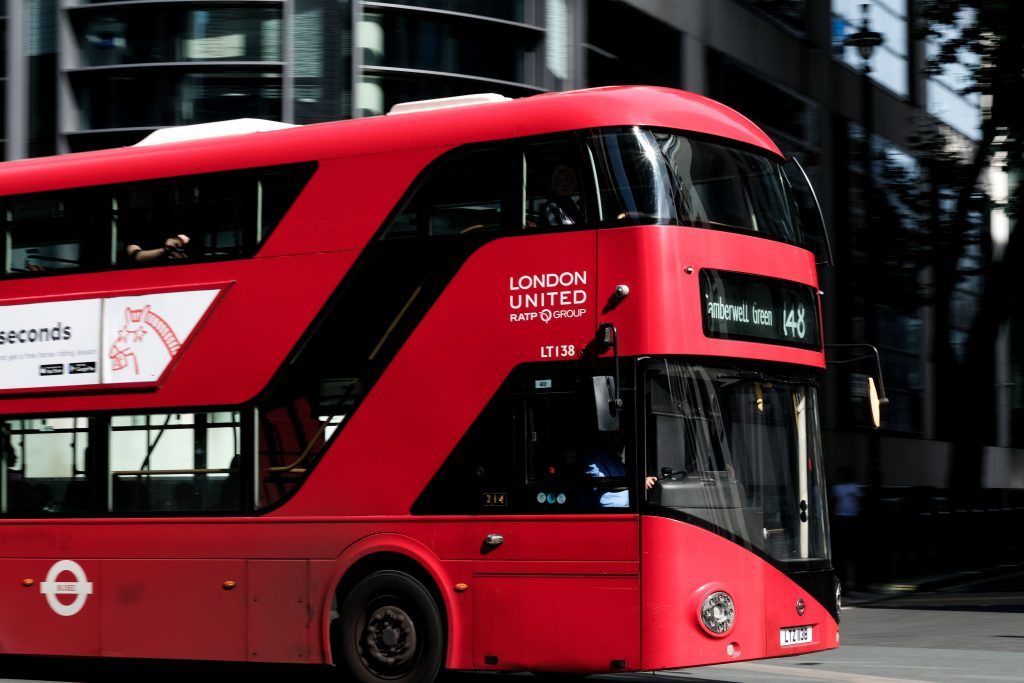Whether you’re a new or a returning student like ourselves, if you’re confused about the different ways of getting around London, this blog post by current King’s students will (hopefully) provide some practical tips on making the most out of the various modes of transportation available in the city! Depending on where you live during term time, certain types of transport may be more suitable for you. We’ll cover the pros and cons of some of the common transportations used by students below.

Tube (Underground)
You will often see students (including myself!) using the Tube to get around London. You can apply for the 18+ Student Oyster photocard when you start university, which you can use for public transport around London. You can also use a contactless card or purchase Travelcards to pay for the Tube. Although there are many Tube stations around London, it is worth noting that there may not be a station near your place of residence, and taking an alternative form of transport like the bus may occasionally be more accessible in certain areas. I personally used the Underground for my classes as it took too long to travel via the bus. One of the biggest advantages of the Underground is that it is a very efficient mode of public transport. Missed the nearest approaching train? The chances are there’ll be another train that you can hop on in a few minutes. You also don’t have to worry about getting stuck in traffic during peak hours, which I think is one of the greatest advantages of taking the Tube!
However, during the peak hours, you should expect the Underground to be very busy, and there may be queues to get on the trains. I certainly struggled to get on a busy tube a few times before! Also, the Underground fares may differ depending on the zone that you live in. Since the Tube is generally more expensive than the bus, it may not be the most economical choice for you. Finally, not all Tubes provide 24-hour service, so if you’re looking to take the Tube late at night, you could be in a position where no more trains are running!

Bus
The bus is a slightly cheaper option and could be better for those who don’t like being underground throughout their journey. When I’m travelling short distances, I tend to prefer the bus as I can use the internet/Wi-fi. Much like the Tube, there are countless stations located around London, so you can easily hop on/off and change stations to get to your destination.
One of the downsides of the bus is that during peak hours, you could be stuck in traffic for a very long time. Moreover, the buses occasionally go on diversion and may not stop on some of their usual stations, which could affect your travel plans. If your nearest station closes due to construction work or other reasons, you will have to find and walk to the next nearest station, which may be rather far away.

Walking/Cycling
Walking is, unsurprisingly, the cheapest way of getting around London, and this will be particularly ideal for those of you who live close to the university. This could be a great way to save money and exercise! You can also cycle around London – if you don’t own your own bike, you could hire Santander Cycle, which ‘costs £2 for unlimited journeys up to 30 minutes, within a 24 hour period’.
These options, of course, may not be possible if you live far away from the university building or are in a rush. During particularly rainy reasons, walking or cycling could also become more difficult. Since London is a busy city with many cars and transports on the road throughout the day, it is also essential that you wear the appropriate safety gear for cycling and are alert to other vehicles and pedestrians on the street. (If you’re a beginner in cycling or haven’t been on a bike for a long time, London – especially central London – won’t be the best place to practice cycling! However, Transport for London Cycle Safety Action Plan has lots of guidance and access to courses to help you travel safer.)
Apps to help you get around
There are many apps and online tools to help you get around London smoothly. Transport for London (TfL) has two brilliant apps, the TfL Go app and the TfL Oyster and contactless app.
You can use the TfL Go app to plan your journeys with live updates to give you the easiest route possible. It allows you to preview your journeys and factors for accessibility such as step-free access. Not only can you use this app for the bus, tube, etc., but also plan walking and cycling routes easily too.
Simultaneously, you can download the TfL Oyster and contactless app to buy tickets and travelcards, top-up your Oyster card, check your journey history and more.
And it doesn’t stop there. TfL has a free, automated service on Facebook Messenger, called the ‘Facebook TravelBot’. Like the TfL Go app, you can find out live updates and check your nearest stop, by messaging questions such as “What’s the next bus?”.
Sign up for email updates like the Weekend Travel email to receive the latest information like service disruption that can affect your future journeys. Likewise, sign up for the journey alert email update, fill in your journey details and get emailed if your journey is going to be disrupted so you can plan a different route in time.
Alternatively, you can download Citymapper, a popular travel app that gets you around London and other cities across the world. (I’ve used this app since my first year!) Similar to the TfL Go app, you can check the live status of buses, Tube, etc. With Citymapper, you can plan journeys using private modes of transport too, like cabs and scooters, minimising any travel disruption with a wide range of options.
Discounts
As a student, you can apply for an 18+ Student Oyster card to get 30% off travelcards, and Bus and Tram season tickets. Sadly, this discount does not apply to pay as you go fares. There are different types of travel cards available including a 7 Day, Monthly, 3 month, 6 month and Annual travelcard. If you’re a frequent TfL traveller, investing in a travelcard may be a cheaper option than pay as you go. But if you know you won’t be using TfL as much, then pay as you go would be a better option, as you would be paying more for a travelcard.
Another travel discount card you can apply for is the 16-25 railcard costing £30 a year or £70 for 3 years. You can get a third off pay as you go off-peak fares when you link the card to your Oyster card. To apply for the discount, visit an underground station and ask a TfL staff member to link your cards.
When making your journeys be aware of peak/off-peak hours and travel disruption. Quieter times to travel on TfL are off-peak hours, and if you’re also able to travel during these times, your journeys will be much cheaper too. You should plan ahead of time to avoid delays and disruptions using the apps and tools recommended above. It’s also good to plan alternative routes, in case of disruptions, that way you can adapt using the alternative route and get to your desired destination in time.
Always plan for the unexpected
Whichever mode of transport you use, make sure it’s all smooth sailing by always checking ahead for any travel disruption that can throw a spanner in the works. Use the different apps and tools we’ve suggested to make your journeys easier and faster no matter where you are in London. And now that you know all the quick and cheap ways to get around London, journey safely!
Yogietha Kirushnamoorthy and Olivia Kim
King’s Student Money Mentors
Part of Money & Housing Advice
The King’s Student Money Mentors blog shares our students’ personal experiences and thoughts on money-related topics. Any reference, opinions or recommendations on a particular company/brand are only the views of the student(s) who wrote the blog post. King’s College London, the Money & Housing Advice service and the Money Mentor project do not share the views in the blogs nor endorse any of the companies mentioned. Readers should conduct their own research before using any companies mentioned in our blog posts.
